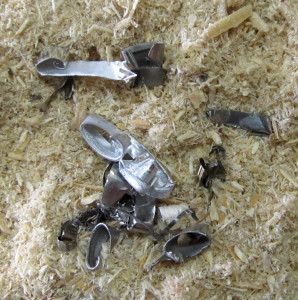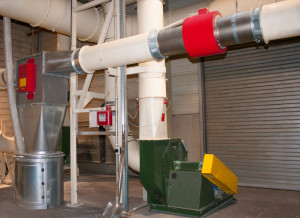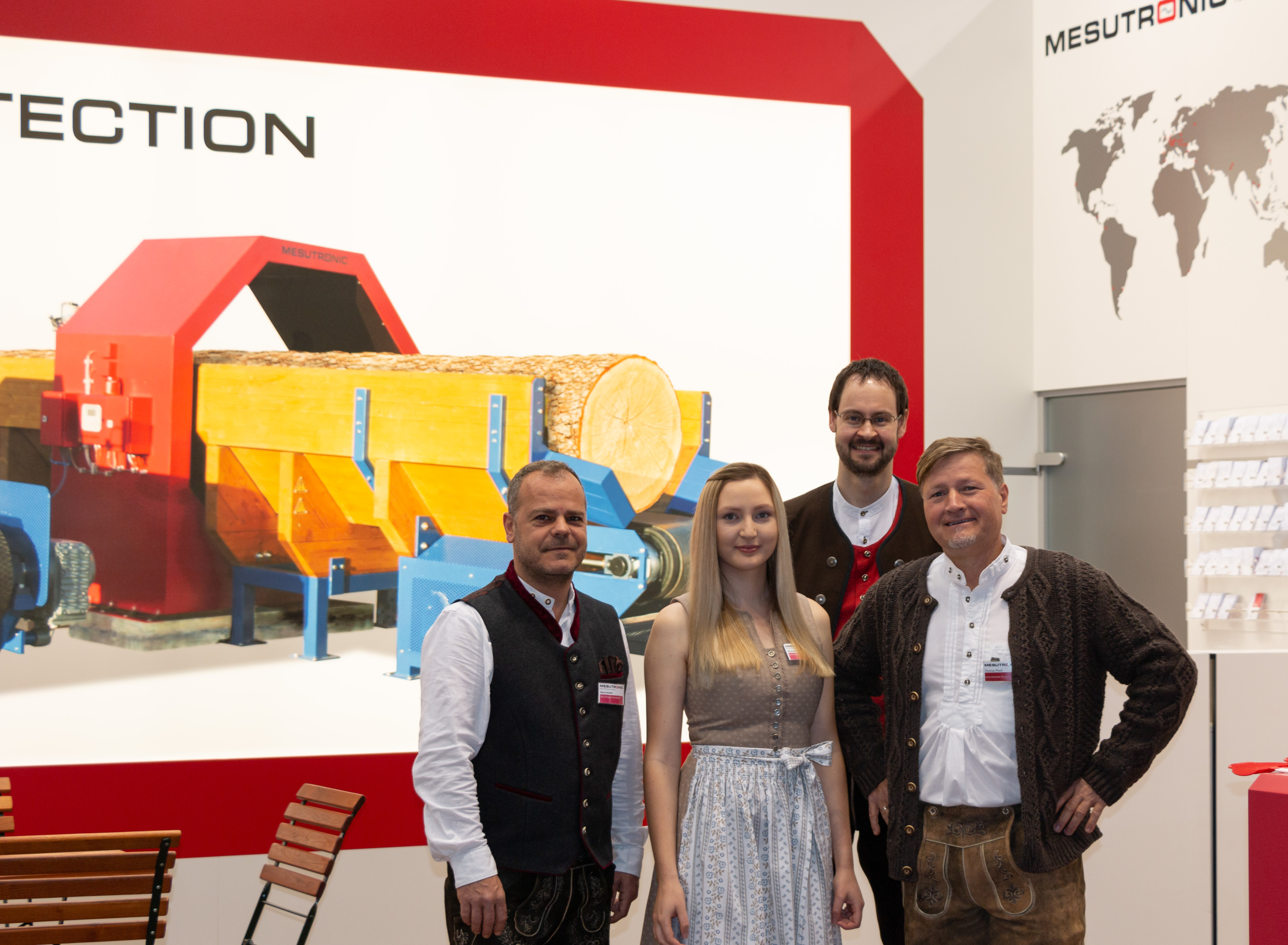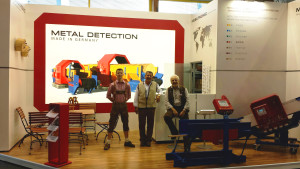Irgendwo auf einem Rundholzplatz in Süddeutschland: Ein Baumstamm wird mit einem Greifer auf ein Förderband gelegt und durch einen Metalldetektor geführt. Plötzlich ertönt eine Alarmsirene und der Förderprozess wird gestoppt – ein Metallteil ist erkannt worden. So oder so ähnlich kennt man den gängigen Metalldetektionsprozess in der Holzbranche. Mögliche Verunreinigungen durch Metalle müssen oft schon vor dem Schnitt im Sägewerk abgefangen werden, um die teuren Sägeblätter zu schützen. Doch wie steht es eigentlich um den Maschinenschutz in der Weiterverarbeitung?
Der finnische Branchenprimus im Holzsegment, Stora Enso, setzt dafür seit Jahren auf die bewährte Technik der Mesutronic GmbH aus Kirchberg im Wald, um seine Produktionsmaschinen abzusichern. Doch der Reihe nach!

Größere Metallteile zum Schutz Ihrer Produktionsanlagen autspüren.
Der Stora Enso – Konzern kann auf eine jahrhundertelange Geschichte zurückblicken und ist heute einer der größten Holzverarbeiter weltweit. Die fünf Geschäftsbereiche erwirtschaften jährlich einen Umsatz von etwa 10,3 Milliarden Euro mit insgesamt 28000 Mitarbeitern. Das Segment „Wood Products“ ist einer der erfolgreichsten im Unternehmen und kann sich mit einer Sägekapazität von 5,6 Mio. m3 wirklich sehen lassen. Ein Teil der Stora Enso – Familie befindet sich im beschaulichen Pfarrkirchen in Niederbayern. An dem Standort wird hauptsächlich Konstruktionsvollholz KVH® und Duo-/Triobalken® für das Baugewerbe hergestellt. Natürlich fallen bei der Produktion auch Abfälle an; das sogenannte Industrierestholz. Dabei handelt es sich um Hölzer, die als Nebenprodukte, Rückstände oder Abfälle in der holzbearbeitenden und –verarbeitenden Industrie entstehen. Selbstverständlich werden im Werk Pfarrkirchen die Industrieresthölzer nicht einfach entsorgt, sondern einer nachhaltigen und umweltfreundlichen Verwertung zugeführt. Zunächst wird das Holz in Silos gesammelt und für die weitere Verarbeitung bereitgestellt. Bereits vor den Sammelbehältern ist ein erster Metalldetektor von Mesutronic installiert worden, der sozusagen als Eingangskontrolle fungiert. Er ist unter einer Vibrorinne montiert und hat die Aufgabe, größere Metallteile, die eventuell den nachgelagerten Schredder beschädigen könnten, aufzuspüren. Und das macht er schon seit über 10 Jahren sehr erfolgreich. Nach dem Silo bestehen grundsätzlich zwei Möglichkeiten der weiteren Verwertung. Erstens die Verbrennung in der hauseigenen Heizung oder zweitens die Verarbeitung zu Holzpellets. Bei letzterer Möglichkeit folgen weitere Bearbeitungsschritte, die hoher Sorgfalt bedürfen. In einer Mühle werden die Rohstoffe weiter zerkleinert und über ein Rohrsystem der Pelletieranlage zugeführt. Unter hohem Druck wird das Material anschließend durch eine Stahlmatrize gepresst, die Löcher in der gewünschten Pelletsgröße aufweist. Durch den hohen Druck findet eine Erwärmung des Holzes statt, das im Material befindliche Lignin verflüssigt sich, so dass es als Bindemittel dienen kann.

Der METRON 05 PowerLine Metalldetektor bildet in Kombination mit der High Speed TEXREJECT – Umlenkweiche ein hocheffizientes Komplettsystem.
Um die Matrize zu schützen, muss vor der Pelletieranlage ein Metalldetektor mit Ausscheidesystem platziert werden. Stora – Enso Pfarrkirchen setzt dabei auf eine Lösung aus der Textilindustrie. Der Metalldetektor Metron 05 PowerLine wird mit dem Hochleistungsausscheidesystem Texreject zu einem leistungsfähigen Gesamtsystem kombiniert. Dabei ist der Metalldetektor in einem Rohrsystem montiert und prüft vor der Ausscheideweiche das zerkleinerte Holz. Wird eine Metallverunreinigung erkannt, gibt der Detektor ein Signal an die Texreject weiter, die dann das kontaminierte Material ausscheidet. Die kleinen Holzfragmente kontrolliert zu separieren, ist die große Herausforderung undgleichzeitig auch Neuland in der Holzbranche. Der Separator von Mesutronic bringt alle Voraussetzungen mit, um die Schwierigkeit zu meistern. Durch den pneumatischen Durchmesser von 500 mm bewältigt er selbst gewaltige Materialströme ohne Probleme. Mit seiner schnellen Klappenöffnungszeit von 0,16 s trennt er zuverlässig und ohne Produktionsunterbrechung Verunreinigungen vom Produktstrom und leitet sie in einen Schlechtmaterialbehälter um. Vorkommende Kontaminationen sind beispielsweise Setzstempel aus Stahl, die zur Markierung von Konstruktionsvollholz® dienen. Diese sind so hart, dass sie die Pelletsmatrize irreparabel beschädigen und die Produktion zum Erliegen bringen würden. Die zuverlässigen und wartungsarmen Metalldetektoren und –Separatoren von Mesutronic verhindern das seit vielen Jahren verlässlich.



